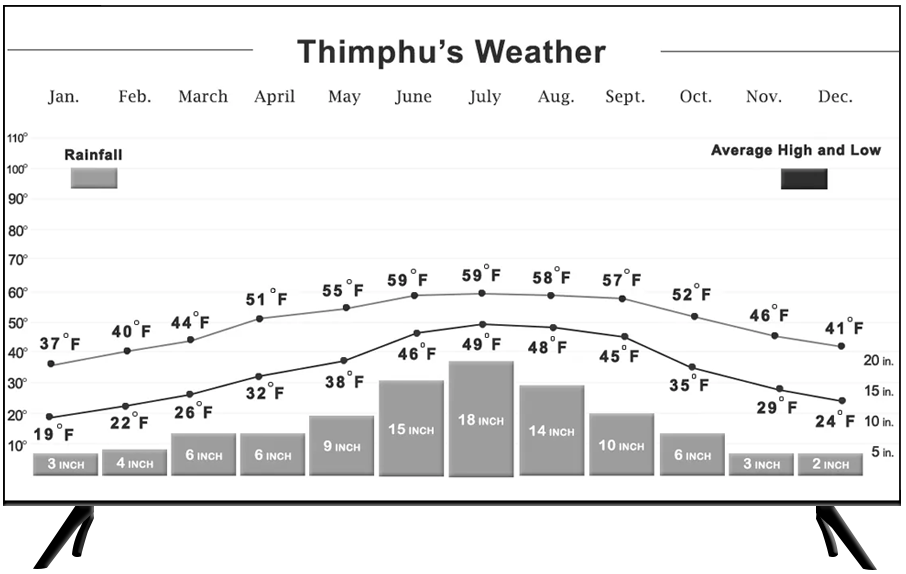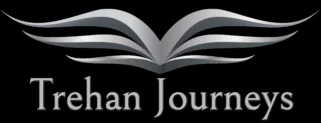


Day 12. Thimphu
Overnight – The Postcard Dewa
Start your guided exploration of Bhutan with a visit to the Buddha Dordenma, the massive Buddha statue located on a hilltop overlooking the highway entering Thimphu. This bronze Shakyamuni Buddha statue was completed in 2015 and is gilded in gold. It is 169 feet (51.5 meters) tall, and you will visit the 125,000 Buddha Dordenma (100,000 8 inch and 25,000 12 inch) gilded bronze Buddha statues which are placed inside the main statue. Its ornate base houses a large and beautiful meditation hall.
The views of Thimphu and the surrounding Himalayan ranges are spectacular from the area around the statue.
Head into Bhutan’s largest town and proceed for a visit to the King’s Memorial Chorten (Buddhist funeral monument), which is continuously circled by people, murmuring mantras and spinning prayer wheels. Construction of this landmark was the idea of Bhutan’s third king, His Majesty Jigme Dorji Wangchuk, the father of modern Bhutan. His plan was to dedicate this monument to world peace and prosperity. It was completed in 1974 after his untimely death. Today, it serves both as a memorial to the late King and as a monument of peace.
You will also visit the Folk Heritage Museum, which houses a fascinating collection of Bhutan’s living traditions, and can chose to visit the National Textile Museums. There is a break for lunch at your lodge. You may want to change your attire at this time as the main activity today requires pants/long skirts and no bare shoulders.
Afternoon – Visit Tashichhoe Dzong, locally known as the Fortress of the Glorious Religion. Among other things, this impressive edifice is the center of the Bhutanese government. It houses the monarch’s throne room and the seat of JeKhenpo, the Chief Abbot.
Although the original dzong was built in 1641 by the political and religious unifier of Bhutan, Shabdrung Ngawang Namgyel, it was renovated and rebuilt a couple of times over the last few centuries due to damage by fire and earthquake.
When His Majesty Jigme Dorji Wangchuk moved the nation’s capital to Thimphu in 1952, he had the dzong enlarged and renovated extensively over a five-year period. Some parts of the dzong are off limits to visitors but there are plenty of fascinating area’s that you will explore. Of particular interest is the Lowering of the Flag ceremony that is performed in the early evening. After the ceremony you will return to your lodge.
Start your guided exploration of Bhutan with a visit to the Buddha Dordenma, the massive Buddha statue located on a hilltop overlooking the highway entering Thimphu. This bronze Shakyamuni Buddha statue was completed in 2015 and is gilded in gold. It is 169 feet (51.5 meters) tall, and you will visit the 125,000 Buddha Dordenma (100,000 8 inch and 25,000 12 inch) gilded bronze Buddha statues which are placed inside the main statue. Its ornate base houses a large and beautiful meditation hall.
The views of Thimphu and the surrounding Himalayan ranges are spectacular from the area around the statue.
Head into Bhutan’s largest town and proceed for a visit to the King’s Memorial Chorten (Buddhist funeral monument), which is continuously circled by people, murmuring mantras and spinning prayer wheels. Construction of this landmark was the idea of Bhutan’s third king, His Majesty Jigme Dorji Wangchuk, the father of modern Bhutan. His plan was to dedicate this monument to world peace and prosperity. It was completed in 1974 after his untimely death. Today, it serves both as a memorial to the late King and as a monument of peace.
You will also visit the Folk Heritage Museum, which houses a fascinating collection of Bhutan’s living traditions, and can chose to visit the National Textile Museums. There is a break for lunch at your lodge. You may want to change your attire at this time as the main activity today requires pants/long skirts and no bare shoulders.
Afternoon – Visit Tashichhoe Dzong, locally known as the Fortress of the Glorious Religion. Among other things, this impressive edifice is the center of the Bhutanese government. It houses the monarch’s throne room and the seat of JeKhenpo, the Chief Abbot.
Although the original dzong was built in 1641 by the political and religious unifier of Bhutan, Shabdrung Ngawang Namgyel, it was renovated and rebuilt a couple of times over the last few centuries due to damage by fire and earthquake.
When His Majesty Jigme Dorji Wangchuk moved the nation’s capital to Thimphu in 1952, he had the dzong enlarged and renovated extensively over a five-year period. Some parts of the dzong are off limits to visitors but there are plenty of fascinating area’s that you will explore. Of particular interest is the Lowering of the Flag ceremony that is performed in the early evening. After the ceremony you will return to your lodge.

